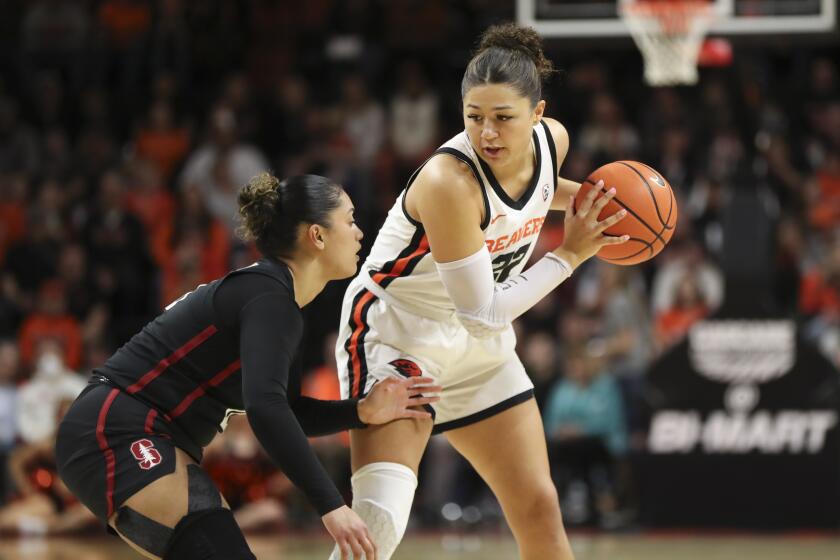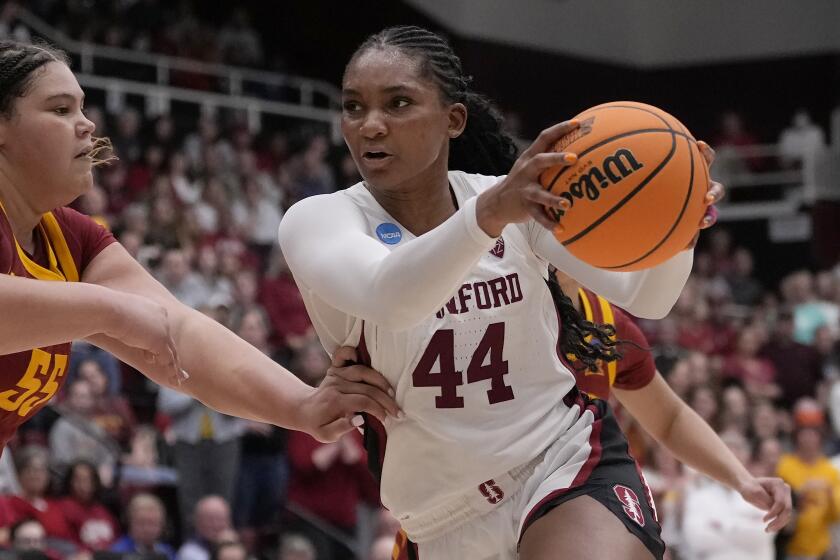USC’s loss was years in making
At first glance, it would seem as though the problems USC has had over its last two games are a sudden phenomenon.
After all, Coach Pete Carroll’s teams have won five consecutive Pacific 10 Conference championships, and before Saturday’s 24-23 loss to Stanford the Trojans had won 35 consecutive games at the Coliseum.
But winning has a strange way of masking subtle problems within a program.
When USC was on top of its game -- the Carson Palmer-Mike Williams to Reggie Bush-Matt Leinart era -- the Trojans were a smooth-running machine. Players were fundamentally sound on both sides of the ball and the Trojans’ coaching staff showed a great knack for having the team well-prepared for whatever an opponent tried.
However, once Carroll began to lose veteran coaches from his staff -- offensive coordinator Norm Chow and defensive line coach Ed Orgeron left after the 2004 season -- USC’s dominant game began to show cracks.
From dropped passes to missed blocks to poor tackling to ill-advised penalties, the Trojans have displayed the same type of basic shortcomings that most college football programs have suffered through over the last two-plus seasons.
Just look back to some of the games in which USC struggled but still escaped with victories. Fresno State in 2005, Arizona State, Washington State and Washington last season and the Huskies again this year.
When a team at USC’s level experiences tough games once in a while, they are wake-up calls. But when they occur almost every other week, normally that’s a sign of trouble.
Against Stanford, all of the Trojans’ shortcomings were center stage, starting with the lack of growth shown by senior quarterback John David Booty and shaky offensive line play.
Booty, who has had an interception returned for a touchdown in each of the last two games, is a solid Division I-A quarterback, but USC’s offense needs more consistency and big plays from the position.
Defenses in the Pac-10 are geared to take advantage of Booty’s poor mobility and his habit of staring down receivers. Stanford did this well with a variety of soft zone coverages, and when USC offensive coordinator Steve Sarkisian tried to make adjustments, with rollouts and bootleg plays, the Cardinal was seldom caught by surprise.
In Booty’s defense, USC’s offense played without injured guard Chilo Rachal, center Kris O’Dowd and running back Stafon Johnson, and the Trojans’ receivers did not help with numerous botched passes and indecisive route running.
Booty was also sacked four times and USC’s offensive line failed to win many one-on-one battles against an aggressive Cardinal front. This has to be a concern for line coach Pat Ruel because the Trojans have several teams remaining on the schedule with better overall defenses than Stanford’s.
But if USC really is to bounce back, Carroll has to get more big-time plays from his defense.
Throughout Stanford’s second-half run (which featured a 17-point fourth quarter), the Trojans had players in position to make a tackle or interception but came up short. The defense looked very average against a suspect Stanford offense.
Summary: Over the years, Carroll-coached USC teams developed a reputation for being well-prepared because of the Trojans’ ability to take away the strengths of opposing offenses while exposing opponents’ defensive weaknesses.
As USC proved in an impressive win at Nebraska early this season, the Trojans still have what it takes to get that done for big games. But thanks to a decline in one-on-one fundamentals, USC no longer can just expect to defeat middle-of-the-pack conference teams without better game-plan preparation and execution.
--
Go beyond the scoreboard
Get the latest on L.A.'s teams in the daily Sports Report newsletter.
You may occasionally receive promotional content from the Los Angeles Times.



